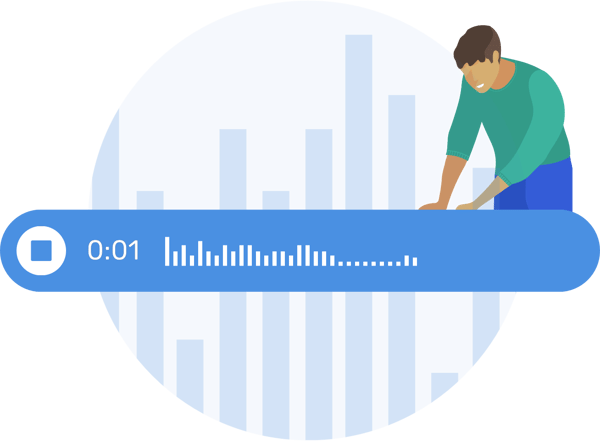Every business needs efficient communication methods in place if they’re going to maintain healthy relationships with their clients. But is it really necessary to hold meetings for every minor issue? Or draw up complicated spreadsheets and reports just for the sake of a weekly update? Here are some corporate communication methods clients hate and what you should be doing instead.

1. Being Tied Up in Too Many Processes
2. Having Too Many Meetings or the Meetings are Too Long
3. Having to Sit Through Too Many Powerpoints
4. Receiving Too Many Reports and Spreadsheets
5. Having to Read Too Many Emails in Never-Ending Email Chains
1. Being Tied Up in Too Many Processes
Every thriving business has set processes in place to deal with client work, internal and external communications and so on. This allows every team to manage their tasks and everyone else who isn’t directly involved in particular projects to stay updated on their progress.
However, some businesses - especially long-established companies - may be a little too rigid with these processes.
For instance, they might follow certain processes for every project, no matter how little or minor some tasks might be. While this is a great way to be organised, it’s definitely not a great way to be productive.
How to Combat This
If an issue crops up and you come up with a solution that’s much quicker to implement if you didn’t follow the official process, scrap the official process! Sometimes, changing things that have always been the same is an ideal way to keep up with a changing company and industry.
2. Having Too Many Meetings or the Meetings are Too Long
“We've got a meeting.” These words are quite possibly four of the worst words any office worker wants to hear. Why? Because they’re time consuming, have an impact on general productivity and in sometimes, attendees come away learning nothing useful at all.
What? Meetings (client conference calls included) are sometimes useless? Yes, you heard us correctly.
A recent eShare study surveyed 1,005 office workers and found that almost half (45 percent) often found their minds wandering onto other, non-relevant topics when in meetings. The same study also found that office workers in the UK are spending 25 percent of their week attending meetings.
This begs the issue of meetings not being focused enough and whether that time could have been better spent elsewhere - particularly if the attendee is disengaged. And time being wasted is a problem if you’re holding too many meetings.
How to Combat This
Because meetings are sometimes necessary, the solution isn’t as simple as “hold fewer meetings.” Instead, think about how important and trivial topics are.
For example, a meeting is appropriate for announcing that you’re developing a new product line or require client input. But it probably won’t be if you’re announcing that a certain team member who’s working on the project is off ill that day. In the trivial cases, just send an email.
If conference calls are overrunning, consider why this might be the case. Are both you and the client getting everything you need out of the call? Are you finding that you keep going off track? Combat this by drawing up a plan for the call (AKA what’s on the agenda) and politely steer the conversation back on track if you start touching on non-relevant topics.
3. Having to Sit Through Too Many Powerpoints
Like meetings, powerpoint presentations are useful for important announcements. But they can also negatively impact productivity if the attendees leave the presentation feeling more confused than when they went in.
How to Combat This
First, know that presentations aren’t the answer for every announcement. They’re great if you’re pitching big ideas to a client but not so much if you’re only discussing a handful of small points. What’s the point in putting together a detailed presentation and cue cards for the sake of, say, two little points you could’ve discussed in a Zoom call or an email? It’s also a waste of the client’s time.
Then, there’s the issue of giving a bad powerpoint presentation. If your presentation was boring, people weren’t listening and you never really got your message out, it’s also a waste of time. For both you and the client. So, make sure you know how to present properly and give your audience some value.
4. Receiving Too Many Reports and Spreadsheets
Reports and spreadsheets can be handy for presenting a detailed overview of data. But while they’re great for analytic purposes, they’re certainly not an easy piece of material to digest. Nor are they to put together.
In fact, pulling together all the data is incredibly time consuming.
How to Combat This
Sometimes they’re necessary if you need to analyse a large amount of data over a long time period. For example, if a client wants their annual blog statistics. But if they want some daily statistics, is pulling together a detailed report (which will likely take a week or so to do) the right approach? In this case, a conference call would be enough to update your client.
5. Having to Read Too Many Emails in Never-Ending Email Chains
Emails are an integral part of client communication but it’s far too easy to get sucked into the quicksand of email chains. Before you know it, you’re buried beneath emails and you lose track of which you’ve read and replied to and which you haven’t.
Or, you’ve asked the client for some creative input and they’ve responded with “looks good.” It’s then safe to assume that they’re happy with what you’ve put together, right? Only, when you send off the project, it comes back with a ton of edits. So much for “looks good.”
How to Combat This
Avoid getting lost in email chains and an overflowing inbox by discussing important issues via conference calls or face-to-face meetings. You can also streamline the feedback process by sending clients the first draft of a project’s content and setting up a call to go over the piece together so both parties can understand each other’s reasoning.
Of course, that’s not to say that you should scrap emails entirely. Emails are still extremely useful and are great if a client wants to contact you at random times, but you just need to know when to use them. A good rule to follow is if an email conversation is becoming longer than two replies or it seems as though the client is getting confused, offer to set up a call.
Guilty of a Few of Those and Want to Nail Your Agency’s Comms?
The corporate communication methods we mentioned above are just a tiny slice of the pie when it comes efficient team communication. There are other things to know, such as internal communication, company culture and the right tools and technology that can help.
That’s why we’ve put together a guide to help agency owners smash their team communication. Download it below.
.png)



